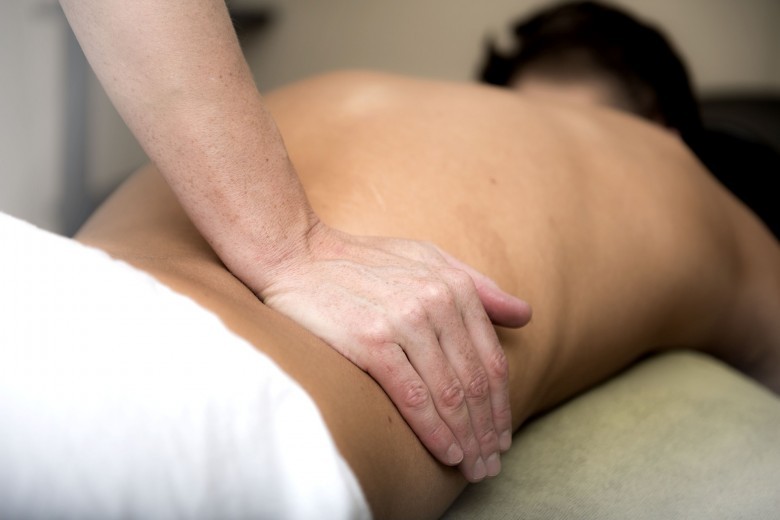
Lower back injuries are among the most common complaints seen in primary care and workers' compensation. Approximately 85 percent of the general population in the western world is afflicted with an episode of back pain in their lifetime.
The peak incidence of lower back pain is found to be highest during the most productive years of life, ages 25-60, making work-related lower back injuries a major health concern. In order to address this, a strategic three-step plan to reduce work-related lower back injuries is required:
• identification of ergonomic risk factors that can contribute to injury;
• implementing ergonomic control measures;
• following safe work practices, including proper posture and safe lifting techniques during work activities.
Ergonomic Risk Factors
Ergonomics is a multidisciplinary field-it addresses the interactions of people, work tasks and the total work environment. Ergonomic risk factors are job attributes or exposures that increase the probability of developing a work-related injury: repetition, forceful exertion, stressful postures, contact stress, vibration and temperature extremes.
The presence of an ergonomic risk factor does not necessarily mean that a person is at an excessive risk for developing a work-related injury, but the greater the exposure to an ergonomic risk factor, or multiple risk factors, the greater the probability will be of a worker becoming injured.
Posture: The No. 1 Culprit
The primary ergonomic risk factor responsible for back injuries in the workplace is stressful posture. Posture refers to the position of a specific anatomical body part in relation to an adjacent body part.
Stressful postures occur when an extreme or awkward body position places undue stress on muscles, ligaments and joint structures. Stressful postures can result in physiological damage to the tissues within or around a joint. Stressful postures typically include end range of joint motion and excessive rotation.
Stressful postures should be minimized to reduce physiological damage. To achieve this, the evaluator must be familiar with the components of posture-adjacent body parts, the angle of the joint connecting adjacent body parts, and motion-as well as how these components induce damage.
Adjacent body parts. In assessing back posture, the position of the legs and the thoracic and cervical spine is critical. If the adjacent body parts are positioned in awkward angles in relation to the spinal segment, there will be a greater physiological stress placed on the tissues that support and maintain the position.
The more awkward these positions are, the greater the physiological stress, so adjacent body parts should be maintained in positions that promote open-packed joint positions, tissue relaxation and maximum circulation to the working tissues.
The angle of the joint. This angle will influence the degree of joint and tissue stress. Awkward joint angles place physiological stress on the joint structures, muscles and tendons. The more awkward the angle of the joint is, the greater the tissue damage. Awkward joint angles, including end range of motion and excessive rotation, should be minimized.
Motion. This refers to whether the posture is static or dynamic. Static postures must be held for a period of time, and can cause tissue fatigue and microtrauma due to continual muscle firing and strain on the tendons and ligaments.
Dynamic posture involves rotational forces of one body segment relative to another about a common axis or joint. Dynamic postures involve angular displacement, velocity and acceleration, and are preferred over static postures due to the ability to use multiple muscle groups, enhance circulation and prevent local tissue fatigue.
Because of physiological requirements to maintain muscle and tendon functions, no position can be maintained indefinitely; all positions have some dynamic component to them. The more stationary a position is, however, the greater the degree of risk for tissue fatigue and injury; for this reason, dynamic postures and the ability of a worker to vary position are of utmost importance.
Ergonomic Controls: A Three-Pronged Approach
Instituting ergonomic controls in the workplace, which place limits on duration, frequency or the intensity of ergonomic risk factors, can be an effective method in preventing lower back injuries. Ergonomic control measures fall into three categories.
Engineering Controls. These involve modifying the work interface:
• Adjust work surfaces to minimize awkward postures and ensure appropriate sitting and standing postures;
• Provide footrests to standing and sitting workstations;
• Tilt work surfaces to bring the work closer to the worker;
• Make the work more accessible by raising or lowering the work with lifts, platforms, or scaffolds;
• Reduce the size and weight of the materials handled;
• Design the workstation for the target population (male or female, as one example);
• Provide carts to reduce material-handling activities;
• Maintain all equipment on a regular basis;
• Install mechanical lifting aids to counterbalance loads: lifting devices, reaching devices and pulley systems;
• Provide joint protection, anti-vibration or shock absorbance to reduce exposure to the physical environment (vibration, concrete floors, cold). This can include anti-fatigue mats, gel insoles and anti-vibration seating systems.
Administrative controls. These involve modifying the work process, flow or organization to reduce the exposure of the worker to an ergonomic risk factor. Examples include:
• Provide job rotation or alternating work activities;
• Reduce the length of work shifts;
• Limit employee overtime;
• Increase the number of employees available to perform a task;
• Implement mandatory or additional rest breaks;
• Alternate highly repetitive work tasks with less repetitive ones;
• Reduce production quotas or machine pace.
Work Practices. These include general health habits, complying with safety rules and maintaining proper posture and good lifting techniques. Examples include:
• Maintain good health habits;
• Participate in a smoking cessation program;
• Participate in a weight loss and/or regular exercise program;
• Follow safety rules;
• Understand the limitations of safety equipment.
Proper Posture
Since postures can contribute to the development of lower back injuries in the workplace, reducing these stressful positions throughout the day is critical.
Proper postures result in the least amount of physiological stress and fatigue on the local tissues through proper positioning of the adjacent body parts, the connecting joint and the degree of motion. They place the least amount of stress on the working ligaments, muscles and joints, resulting in less tissue damage.
Proper postures should be maintained during both static and dynamic activities. Examples include:
Sitting:
• Keep your head directly over your shoulders;
• Do not rotate or tilt your head;
• Keep your shoulders in a relaxed position, resting close to your body;
• Keep your back well supported by the back of the chair;
• Keep your knees at the same height or slightly lower than your hips;
• Keep both feet on the ground or a footrest;
• Do not cross your legs;
• Sit as close to your work as possible.
Standing:
• Keep your head directly over your shoulders, and keep your shoulders relaxed at your side;
• Keep your feet approximately shoulder length apart;
• When possible, place one foot on a stool or rest bar to alleviate back strain;
• Move and stretch frequently.
Finally, functional activities include reaching, bending, squatting, climbing, lifting, pushing and pulling. It is important to maintain a neutral back position when performing all of these functional activities. Keep your stomach muscles tight, and avoid excessive spinal twisting, forward flexion, extension and lateral flexion.































